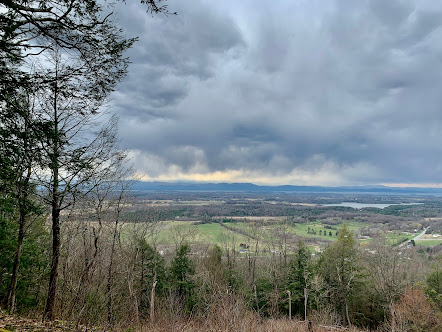April 15.
April 15, 2022
Rain, rain, rain, all day, carrying off the snow. The broad flat brown buds on Mr. Cheney's elm, containing twenty or thirty yellowish-green threads, surmounted with little brownish-mulberry cups, which contain the stamens and the two styles, -- these are just expanding or blossoming now.
The aspen on the railroad is beginning to blossom, showing the purple or mulberry in the terminal catkins, though it droops like dead cats' tails in the rain. It appears about the same date with the elm.
I think that the largest early-catkined willow in large bushes in sand by water now blossoming -- the fertile catkins with paler blossoms, the sterile covered with pollen, a pleasant lively bright yellow -- is the brightest flower I have seen thus far. I notice that the sterile blossoms of that large-catkined early willow begin to open on the side of the catkin, like a tinge of golden light, gradually spreading and expanding over the whole surface and lifting their anthers far and wide. The stem of these sterile catkins is more reddish, smoother, and slenderer than that of the female ones (pale-flowered), which is darker and downy.
H. D. Thoreau, Journal, April 15, 1852
The aspen on the railroad appears about the same date with the elm. See A Book of the Seasons, by Henry Thoreau, the Aspens; also Elms and the Purple Finch.
I think that the largest early-catkined willow . . . is the brightest flower I have seen thus far. See April 12, 1852 (“It is fit that this almost earliest spring flower should be yellow, the color of the sun.”); April 18, 1852 ("The most interesting fact, perhaps, at present is these few tender yellow blossoms, these half-expanded sterile aments of the willow, seen through the rain and cold, — signs of the advancing year, pledges of the sun's return."); February 11, 1854 (“For how many aeons did the willow shed its yellow pollen annually before man was created!”)






No comments:
Post a Comment